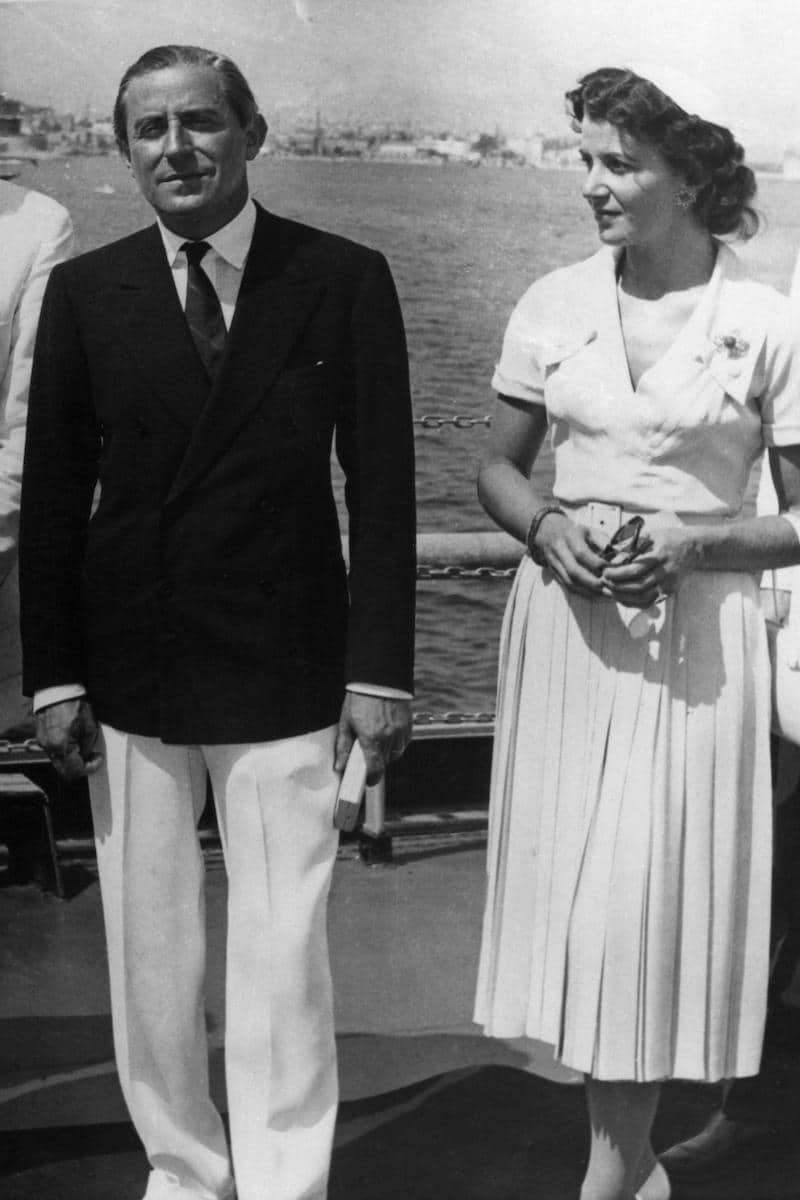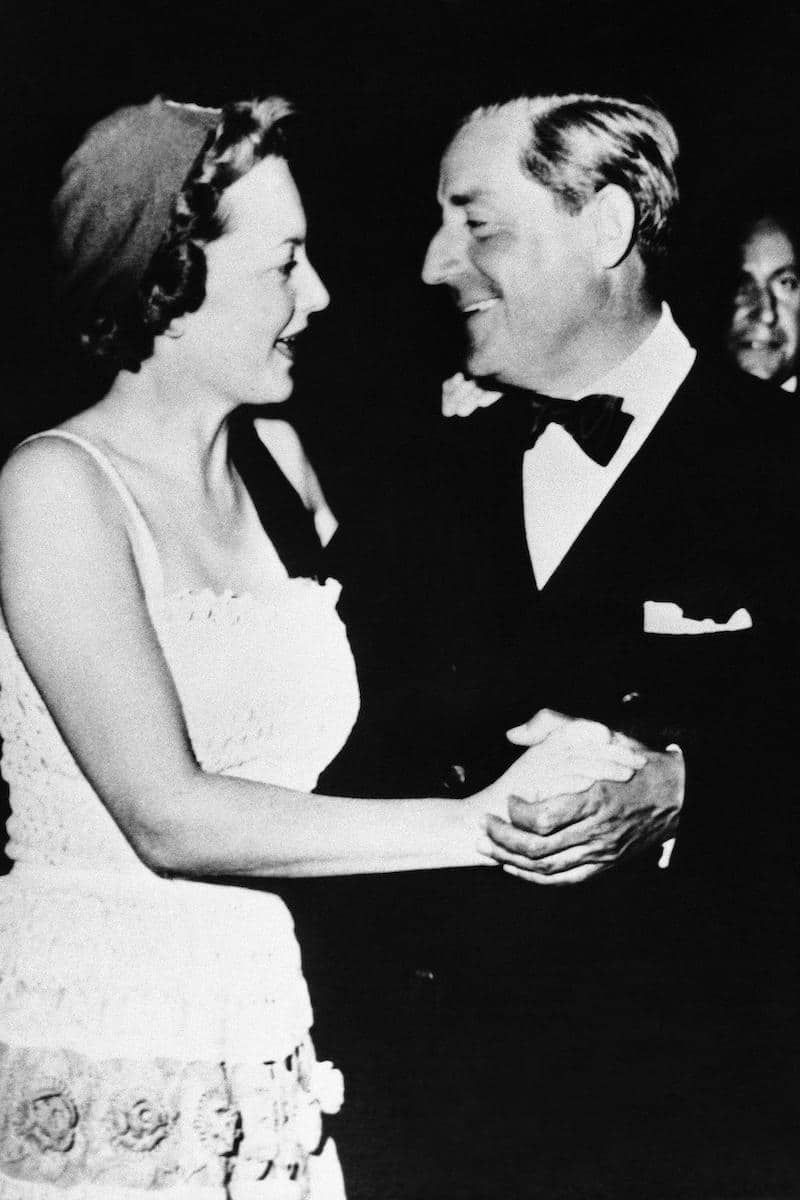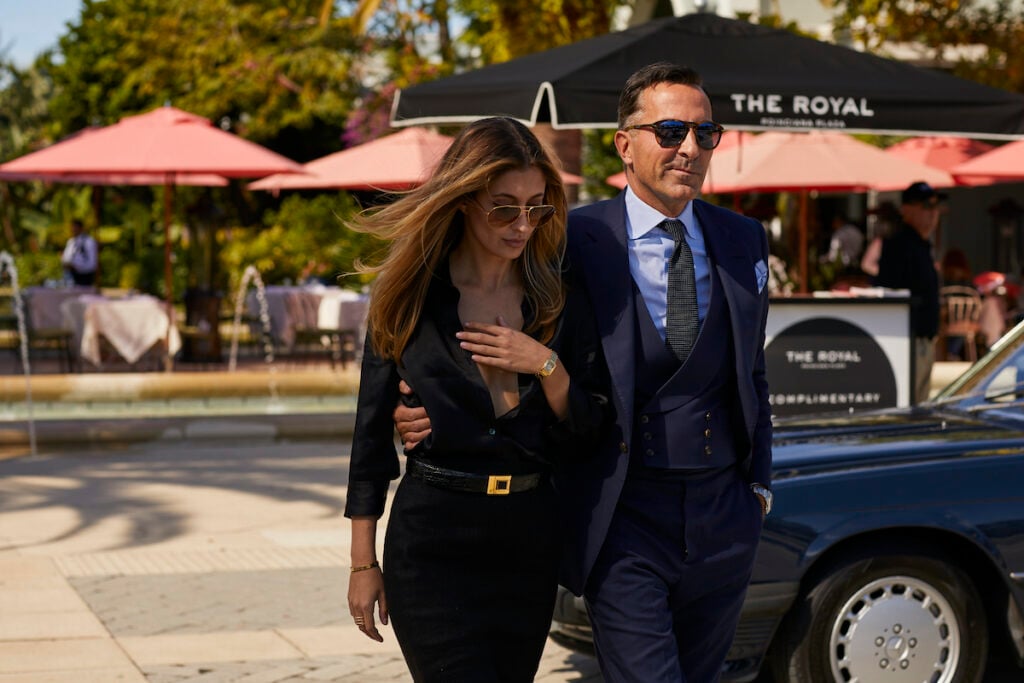- Finely Krafted Weekly Magazine / Inspiration, Sartorial
Tons of Taste
- Date:
Author: Freddie Anderson

At first light on November 28, 1966, a swarm of women were admitted to a salon at 19 East 54th Street, New York City. Months previously, whilst visiting the salon, photographer Irving Penn had remarked to its proprietor, “You’re standing in the middle of history”. That proprietor was in fact the high society hairstylist Kenneth Battelle, and if one was acquainted with his patrons, you’d probably already know Penn’s observation to be accurate. When dusk fell, there was still a coterie of glamorous ladies ascending to Kenneth’s temple of beauty on the third floor. Amongst them were Lauren Bacall, Lee Radziwill, Rose Kennedy and Pamela Churchill, then Mrs. Leland Hayward. “We had a lot of wives, ex-wives, and mistresses that we had to hide in different places,” Kenneth recalled. The imminent soirée that lured the glitterati of film, fashion, art, politics and even royalty to Kenneth’s lair was Truman Capote’s fabled Black and White Ball, otherwise known as the Party of the Century, thus ratifying Penn’s assertion. An indefatigable diplomat and socialite, Churchill’s marriages and liaisons with such luminaries certainly kept the tabloids busy. One of those liaisons was with the Greek shipping tycoon, Stavros Niarchos – a name which fittingly means “master of ships”.
Niarchos wasn’t present that night, but pictured wearing a mask in the Grand Ballroom was his then wife, Charlotte Ford. The daughter of Henry Ford II – the CEO of Ford Motor Company – her fierce independence became the stuff of legend with this comment by Capote: “She was one of the first to wear Courrèges. There was somebody who found her look and should have stayed with it”. She didn’t wait long to divorce Niarchos – a mere 14 months after their secretive wedding in Juarez, Mexico. However, in typical Niarchos fashion, he used this supposed set-back to his advantage. He was still intimate with his third wife, Eugenia Livanos, who was also mother to four of his children (the fifth being his daughter by Charlotte) and was notably the elder daughter of Greece’s most powerful shipowner, Stavros Livanos. Niarchos cleverly persuaded the Greek court to void his marriage with Ford on the premise that Greece did not recognise civil marriages. And his next masterstroke to officially retrace his steps with Eugenia was the fact that the Greek Orthodox Church had never dissolved their wedlock. Following her untimely death in 1970, he married her younger sister Tina, who in the early 1960s had divorced Aristotle Onassis and married Sunny Blandford, later the 11th Duke of Marlborough. Sadly, Tina died in 1974. For anyone part of the beau monde of society, it’s all too easy to be defined by details of one’s personal life, but for Niarchos, these are but a minuscule footnote to his peerless legacy.

Stavros Spyros Niarchos was born in Athens in 1909, three months after his parents returned to their native country from Buffalo, New York, where they first earned their wealth. He grew up in the port city of Piraeus. His father, Spyros, financed an expansion of the grain trading business of Eugenia’s parents and, together with his brother-in-law, built a flour mill in Piraeus, which enabled Spyros to send his son to a private school. However, Spyros later lost his fortune speculating on the Athens Stock Exchange, forcing him to take his son out of school. This first brush with adversity doubtless ingrained that edge of ambition that Stavros would utilise to unimaginable effect throughout his life.
With Stavros studying law at the University of Athens, the family’s enforced financial restrictions did not play well with his desire to rapidly reach financial stability, given his considerable appetite for night life, women, and luxuries. Thus, in 1928 he went to work for Ioannis “John” Coumantaros, his maternal grandfather and a prominent flour mills businessman. At the beginning of the ‘30s, there was a looming port tariff between Argentina and Greece, potentially devastating for the Greek steamship fleet, which depended on the Atlantic grain trade. However, a few canny Greek entrepreneurs with sufficiently deep coffers risked investing in ships at Depression-level prices. Coumantaros was one of those gamblers, and by the age of 30 Niarchos was effectively in control of the business’ shipping operations, chartering vessels to transport wheat from Argentina around the world.
“You can never tell what ships are worth,” said Niarchos. If there was ever an era that exemplified this quote, it was World War II. Niarchos leased his ships to the Allies in 1941, and although he lost six of them to German bombs and submarine attacks, his $2 million insurance pay-out enabled him to buy up surplus Liberty and Victory cargo ships and T2 tankers, which were mass produced during the war. After leasing the ships to a Panamanian company to avoid American taxes, he was sued by the US Government and was made to pay a $12 million fine, write off some ships and have three supertankers built at American shipyards. Although it appeared that Niarchos found himself on the wrong side of the scheme, he had yet again proven his ability to be ahead of the curve. The post-war boom in trade was the beginning of a shipbuilding spree, and not only did his three large tankers appreciate significantly, he also commissioned others greater in magnitude than those of his competitors. It was an era when Niarchos and other dynamic Greek shipowners became known as the Golden Greeks, although having to share a moniker with Aristotle Onassis would have certainly irked Niarchos.
In the early ‘50s, Onassis and King Saud bin Abdulaziz Al Saud of Saudi Arabia conceived the Jeddah plan, which would have enabled Onassis to effectively monopolise worldwide freighting of oil, thus making him the richest man in the world and the ultimate Golden Greek. Back in London, at Claridge’s Hotel, Niarchos met with Robert A. Maheu, a troubleshooter, and together they devised a strategy to break the Jeddah contract. This was said to have included such tactics as planting a secret microphone in a room occupied by Onassis. Niarchos stressed that there was no market for competitors, and the deal was annulled in a Swiss Court on the grounds that it was a threat to American security. This outcome was not just a coup for Niarchos but a complete triumph, as he claimed the business that Onassis lost.
For fiends of pop culture news stories in the 20th century who were particularly hooked on personal rivalries, Bette Davis vs Joan Crawford, Arnold Palmer vs Jack Nicholson and Stavros Niarchos vs Aristotle Onassis are likely to have been top billing. But there’s no doubt that the Niarchos vs Onassis one-upmanship battle outdid any other rivalries. It was often Onassis’ monumental innovative actions that fired up Niarchos to eclipse them. And he did so on many occasions, building not only a global business empire but also a world-renowned horse breeding and racing operation that remains flourishing to this day, to say nothing of his fabled art collection. As mentioned, the Jeddah deal was reversed from Onassis’ advantage to Niarchos’. In response to Onassis purchasing Skorpios, Niarchos bought his own private island, Spetsopoula. After building the world’s first supertankers, Onassis was dubbed the “tanker king”. Then, in 1955, the 47,750-ton Spyros Niarchos, then the largest tanker in the world, was launched at Barrow-in-Furness and, once again for supremacy on the sea, Niarchos launched Atlantis I – a superyacht fifty-five feet longer than Onassis’ prized Christina O, named after Christina, his only daughter with his first wife, Tina Livanos. As the majority shareholder of Hôtel de Paris through Société des Bains de Mer (SBM), Onassis owned the illustrious Hôtel Hermitage. Yet, in 1968, a company under the aegis of the Niarchos family bought The Kulm Hotel St. Moritz, a historic hotel beloved by Stavros.
Both titans had a penchant for heiresses, and it is possible that part of their attraction may have been to leverage their own empires. It is said that Niarchos originally wanted to marry Tina, but Onassis persuaded her father to permit him to wed her and Niarchos instead married her older sister, Eugenia – a union that endured through the late ‘40s and ‘50s. “Every night then was lived in black tie,” recalled a contemporary of Pamela Churchill, “There was less money than in New York or London today, but far more luxury; there were fewer names and far more taste.” She could just as easily have been referring to Monte-Carlo instead of Paris. In 1951, when Onassis and Prince Rainier III were cordial, the Greek magnate became the de facto second ruler of the Principality. He became the linchpin of Monaco achieving elite status yet again, which was only enhanced by the marriage of Prince Rainier to the Hollywood leading actress Grace Kelly. The illustrious names that frequented the behemoth yachts of Niarchos and Onassis in the harbour only expanded. If there was ever a time or place that imparted the epitome of sartorial taste it was then, on those yachts.

In the summer of ‘56 in Monaco, a celestial picture of Tina – then still Mrs. Onassis – and Niarchos was taken. Wearing a refined white dinner jacket with black trousers, he was gazing into Tina’s alluring eyes and her figure was elevated by her elegant sequin dress. Not only a beautiful picture, to people’s surprise it was taken aboard the rival Christina O. Aside from this remarkable moment, the black tie uniform of Niarchos is worthy of study, especially if one is looking for inspiration when dressing for evening banquets on a boat in the Mediterranean. A perennial favourite in hot weather, the white or off-white dinner jacket became popular with the smart set of the Palm Beach and Rhode Island resorts in the 1930s, often constructed of gabardine, a lightweight and breathable fabric that is now back in favour with polite society. On both our modern era and on the subject of black tie being worn in Paris and the French Riviera, Alexander Kraft is an authority. A long-term resident of Paris, Provence and Monaco, he has always had a discerning eye for elegance. Through his eponymous label, Alexander Kraft Monte Carlo, there is an abundance of creative and stylish garments to enrich your Mediterranean wardrobe. Only this spring, evening wear, including dinner jacket (tuxedo), slippers, bow ties, and dress shirts, has landed at AK MC.
Niarchos was never known to be ostentatious with his vast fortune. Aside from various business deals, he operated with a real touch of class. One day in March 1969 he looked pensive standing in his red salon at Hôtel de Chanaleilles – the magnificent Parisian townhouse that he bought in 1956. Behind him was the imposing biblical painting Pietà, the most famous work by El Greco. Interpolated by Corinthian columns, the red velvet walls only irradiated the timeless Prince-of-Wales check blazer that Niarchos wore over a merino mock-neck sweater. Opting to sport the blazer buttoned-up, for a man standing at just 5ft 5in the choice of a two-button design instead of three-button only increases the impression of height. Made from a linen, silk, and wool blend, there is a tactful Prince-of-Wales check blazer offered at AK MC. Unless you find yourself socialising in smart company in the Caribbean next winter, the blazer, benefitting from an elegant silhouette, is more suited to chic summer events, such as the Barrière Deauville Horse Racing Meeting that takes place each August. Whether he was at Deauville watching one of his thoroughbred horses, on the deck of his yacht L’Creole or simply gazing at a piece of priceless art in one of his acclaimed properties, Niarchos maintained his easy-going disposition, which was always enhanced by his outfits that emanated casual elegance.
Niarchos (London) Ltd has offices around the world, including London, New York and Athens, but its “beating heart” in the 1960s was Monaco. It was here that, himself no stranger to innovation, he had installed in the Monte Carlo office one of the first commercial mainframe computers, to keep track of his vast and eclectic interests, long before computers became a standard business tool. It must be stated that this is not a widely known fact, which only exemplifies Niarchos’ secretive traits. For his trailblazing contribution to business, Niarchos is heralded as a true entrepreneur of the highest order and his example should be used as encouragement for one’s own enterprises. Today, and for Alexander Kraft’s achievements in his own ventures (that include his billion-dollar Sotheby’s International Realty France, Monaco brokerage network, and Alexander Kraft Monte Carlo lines), this should be cited as inspiration for success in diverse practises.
Among the heirs to the Stavros Niarchos I fortune is his grandson Stavros Niarchos III. Now married to Dasha Zhukova, the Russian-American art collector and businesswoman, and ex-wife of Russian oligarch Roman Abramovich, he certainly emulates his grandfather as a connoisseur of women in high society, but has also been tasked with safeguarding the immeasurable assets that Stavros Niarchos I memorialised through the Stavros Niarchos Foundation Cultural Center in Athens, a fitting tribute to this pioneering entrepreneur.
Similar Articles
VAT ID FR00285409991
New client offer
15% on your first order
Please sign up for the AK MC newsletter to receive exclusive insights into the world of Alexander Kraft as well as previews, exclusives and seasonal offers




